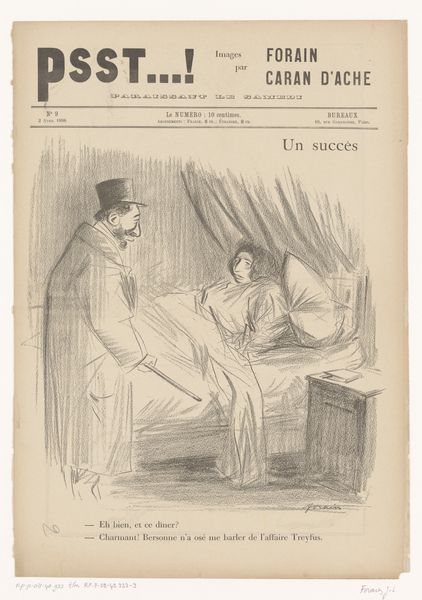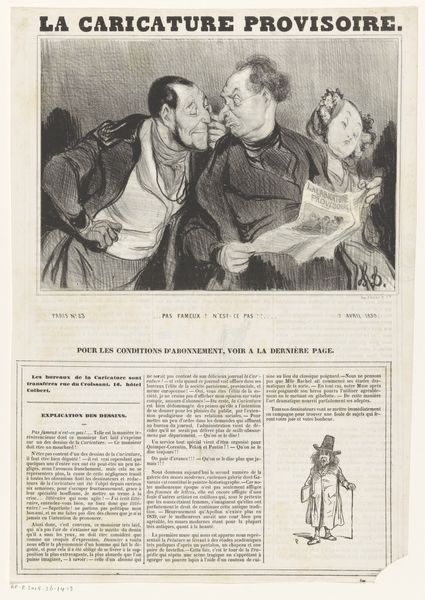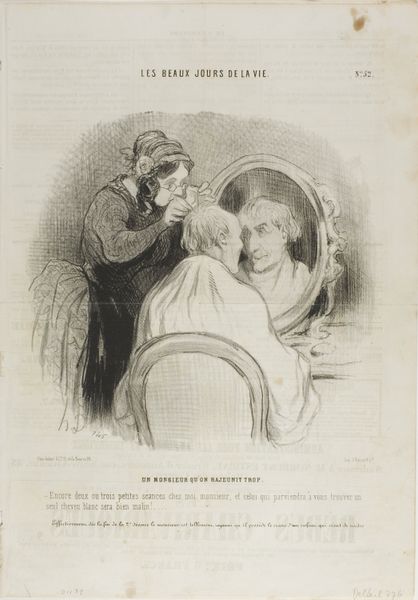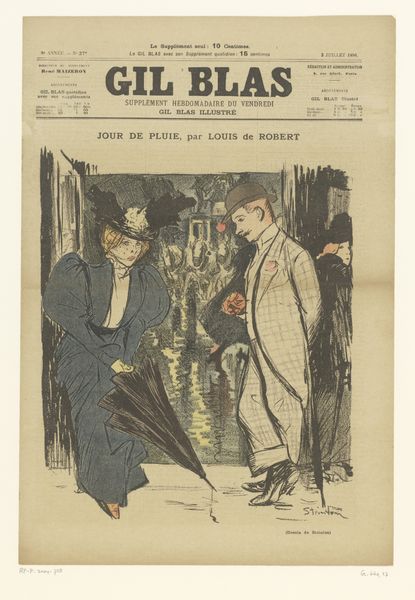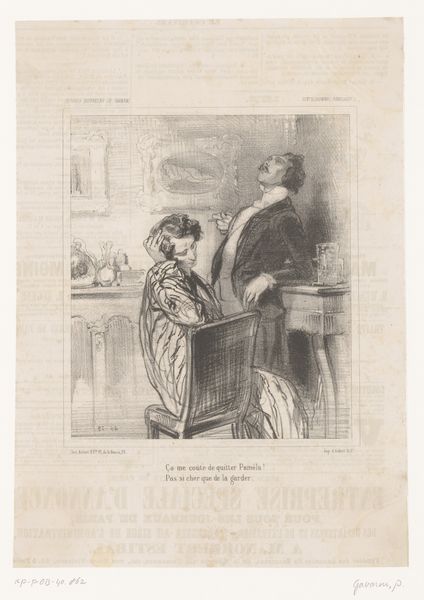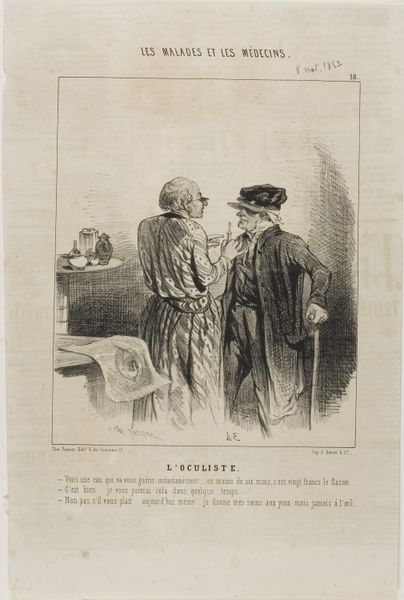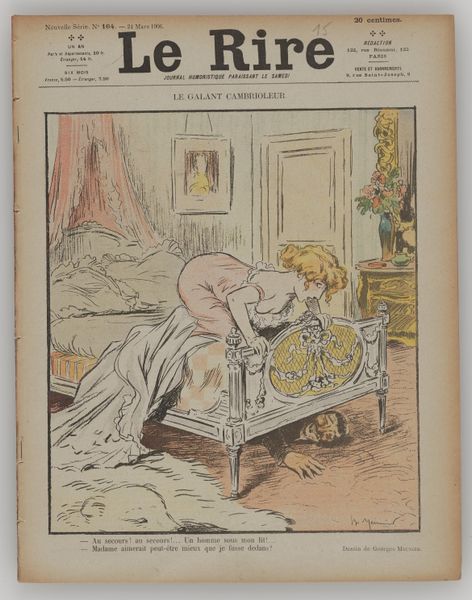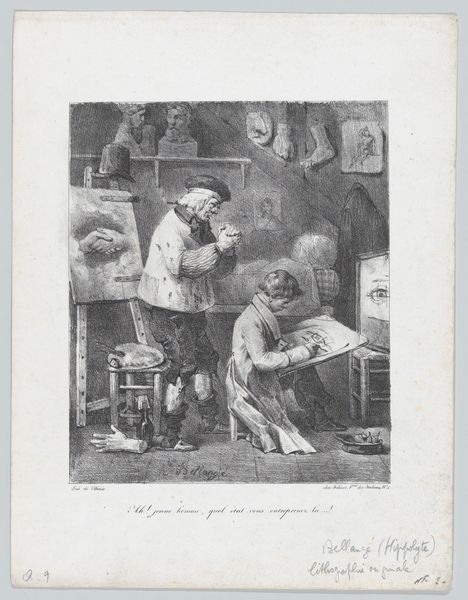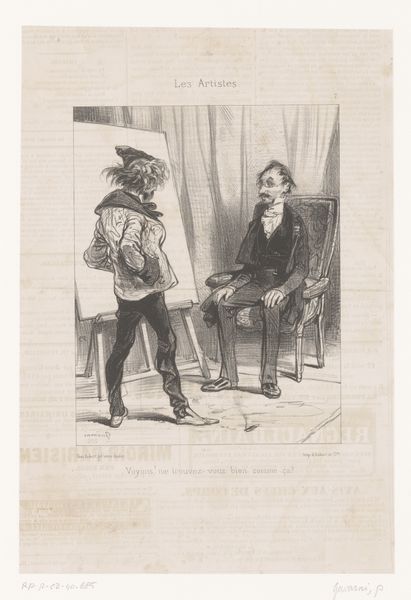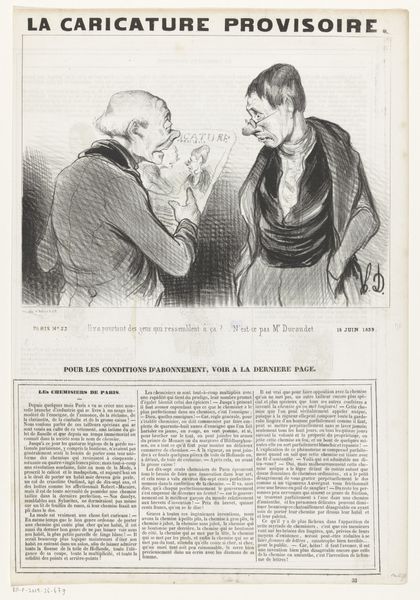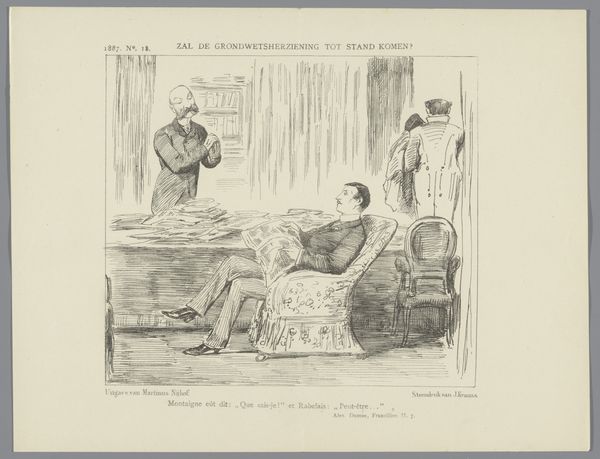
Another Year by the Old Clock (from "Harper's Bazar," Vol. III) 1870
0:00
0:00
Dimensions: sheet: 15 1/2 x 11 1/8 in. (39.4 x 28.3 cm) image: 15 1/2 x 11 in. (39.4 x 27.9 cm)
Copyright: Public Domain
Curator: Winslow Homer's "Another Year by the Old Clock," published in Harper's Bazar in 1870, greets us today. It's an engraving, printed on paper. Editor: It's… somber. The grayscale amplifies the quiet tension. I can almost feel the heavy silence in the room; there’s a palpable weight in the couple’s posture and averted gazes. Curator: That weight likely has social and political dimensions. Consider the historical moment. It's five years after the Civil War, during Reconstruction, a time of profound national reckoning. This image, appearing in a popular magazine marketed to women, subtly probes shifting gender roles. Editor: Yes, I see that now. The interior is domestic but also subtly performative. They're enacting a scene of middle-class leisure, but the faces hint at something unspoken, maybe constraint. There is a palpable resistance against these narrowly defined gender roles as both figures exhibit subdued anger or perhaps dissatisfaction. Curator: Exactly. Notice the subtle details: the man smoking a pipe, a symbol of domestic power, and the portrait of a military man above the mantle suggesting their past or lost family history within a larger cultural memory still deeply affected by the war. The composition, slightly off-kilter, suggests a disruption of traditional social norms. Are they in mourning perhaps? What political views did each of them have? How were they perceived publicly and did that affect their private life? Editor: It’s interesting how Homer uses the conventions of genre painting, which typically emphasizes everyday life, to inject this commentary. I’m wondering about the gaze here. The woman isn't looking at her husband; she's gazing towards a future outside the constraints of the domestic space. Is this quiet longing subversive for that time period? Is her subtle revolt meant to serve as an allegory to other women from that period who are unhappy? Curator: Potentially subversive. Homer, working within the popular press, has to balance his artistic vision with the expectations of his audience and editors. Editor: He captured the American psyche in that moment—yearning, unsettled, unsure. This print goes beyond a simple domestic scene; it offers a subtle and complex reading of identity in post-war America. Curator: A nuanced perspective emerges. It allows us to see the politics of personal life during Reconstruction, a theme rarely so deftly illustrated.
Comments
No comments
Be the first to comment and join the conversation on the ultimate creative platform.
